I followed along with this tutorial (http://www.bit-101.com/blog/?p=1861) and noticed that upon saving the same image multiple times, the quality slowly degraded.
Aside from the memory leaks, what's going wrong here? It should be pulling 4 bytes (rgba) for each pixel. Where's the loss if each pixel is accounted for?
----------------- EDIT -----------------
I'm saving a new image from the pixel data each time there's a vertex position transformation, then load this altered image into my texture buffer, and reset the vertex/index buffers. That way I can keep my changes persistent and ultimately make a less choppy warp. See my other SO question: OpenGL ES 2.0 Vertex Transformation Algorithms
----------------- EDIT -----------------
Before

After

Here's the code from the tutorial:
-(UIImage *) glToUIImage {
NSInteger myDataLength = 320 * 480 * 4;
// allocate array and read pixels into it.
GLubyte *buffer = (GLubyte *) malloc(myDataLength);
glReadPixels(0, 0, 320, 480, GL_RGBA, GL_UNSIGNED_BYTE, buffer);
// gl renders "upside down" so swap top to bottom into new array.
// there's gotta be a better way, but this works.
GLubyte *buffer2 = (GLubyte *) malloc(myDataLength);
for(int y = 0; y < 480; y++)
{
for(int x = 0; x < 320 * 4; x++)
{
buffer2[(479 - y) * 320 * 4 + x] = buffer[y * 4 * 320 + x];
}
}
// make data provider with data.
CGDataProviderRef provider = CGDataProviderCreateWithData(NULL, buffer2, myDataLength, NULL);
// prep the ingredients
int bitsPerComponent = 8;
int bitsPerPixel = 32;
int bytesPerRow = 4 * 320;
CGColorSpaceRef colorSpaceRef = CGColorSpaceCreateDeviceRGB();
CGBitmapInfo bitmapInfo = kCGBitmapByteOrderDefault;
CGColorRenderingIntent renderingIntent = kCGRenderingIntentDefault;
// make the cgimage
CGImageRef imageRef = CGImageCreate(320, 480, bitsPerComponent, bitsPerPixel, bytesPerRow, colorSpaceRef, bitmapInfo, provider, NULL, NO, renderingIntent);
// then make the uiimage from that
UIImage *myImage = [UIImage imageWithCGImage:imageRef];
return myImage;
}
-(void)captureToPhotoAlbum {
UIImage *image = [self glToUIImage];
UIImageWriteToSavedPhotosAlbum(image, self, nil, nil);
}